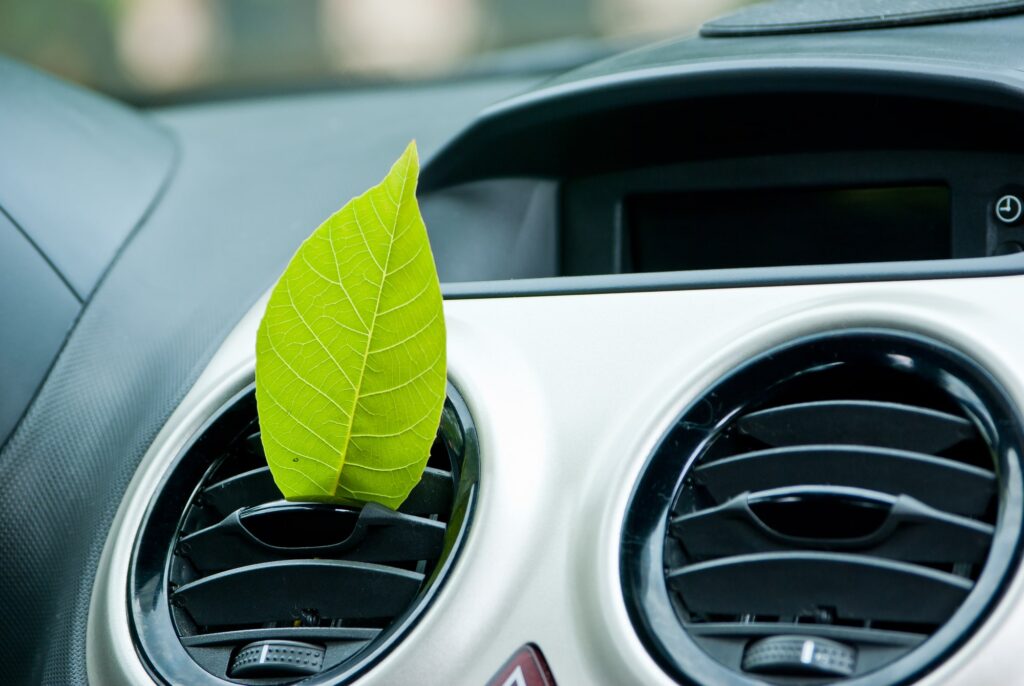
To be ready to choose from the best air purifiers for home in India under ₹20,000, you need to first know what your expectations are. The easiest way to do this would be to ask yourself: what do you expect when you spend close to ₹20,000 on a device?
Do you expect the device to be flawless with an exceptional core function? Do you expect it to be loaded with state-of-the-art features? Do you expect it to be extremely durable and long-lasting? Or do you expect that rarest of rare sense of class from it?
Answer these questions and you’ll know exactly what your next air purifier needs to be.
Answer these questions and you’ll find it very easy to choose a device from this guide on the best air purifiers in India under ₹20,000.
To help you along, we’ve even included some fundamental information about air purifiers in this guide. You’ll learn about why you should get one ASAP, what’s the meaning of some of the commonly used terms, and how you can get the most bang out of every buck you’ll be spending. Of course, there will be in-depth reviews of the best air purifiers in India with the price range too.
- Why Should You Get an Air Purifier with HEPA Filter in India?
- How To Get the Best Out of Air Purifiers in India?
- How To Choose from The Best Home Air Purifiers in India Under ₹20,000?
- Which is the Best Air Purifier in India Under ₹20,000: At a Glance
- Which Air Purifier is Best in India Under ₹20,000 (Bedroom / Small Rooms): Detailed Reviews
- Which is Best Air Purifier Under ₹20,000 (Dining Room / Medium Rooms): Detailed Reviews
- Top 4 Air Purifiers in India Under ₹20,000 (Living Room / Large Rooms): Detailed Reviews
Why Should You Get an Air Purifier with HEPA Filter in India?
This question can be answered in different ways.
We can explain how pollution is increasing all over the country. We can back this up with reports from the WHO in Indian publications.
We can also try to prove to you how all this pollution will almost always make you sick. Depending on your current fitness levels, you can see the effects of exposure to excessive pollution either in the next few days or many years.
For example, people with some kind of respiratory problem and lower immunity start suffering within a few hours of being exposed to pollution. Fitter individuals who exercise regularly will only start suffering when they get older i.e., a decade or two later.
Countless studies explore the short, medium, and long-term effects of prolonged exposure to air pollution. We’ve listed quite a few of them in our guide on the best air purifiers in India under ₹10,000.
This is why we won’t be focusing on this aspect in this guide. Suffice it to say that if you choose to not get an air purifier for your home, you’ll be taking a massive risk with your health and the health of your family, especially the kids and the elderly.
Best Air Purifiers in India Under ₹20,000 for Small Rooms | Best Air Purifiers in India Under ₹20,000 for Medium Rooms | Best Air Purifiers in India Under ₹20,000 for Large Rooms |
Coway AirMega 150 (AP-1019C) Professional Air Purifier | Philips AC2887 Air Purifier | Philips AC2958/63 Air Purifier |
An excellent and affordably priced air purifier from an international company known for incorporating innovative features in its products. | One of the best air purifiers especially in the Indian market that is not only effective but also super long-lasting because its replacement filters are easily available. | The latest model of air purifier released by the market leaders, which includes all the usual features and functions in addition to WIFI, app, and voice compatibility. |
How To Get the Best Out of Air Purifiers in India?
Someone looking to spend upwards of ₹10,000 on a machine is not going to do it lightly. They will do the research and understand the right way of using the product before actually laying down the cash.
Therefore, it is likely that you already know a lot about using air purifiers and getting the most from them.
For instance, we’re sure that you know that to get the most out of your air purifiers, you need to keep your doors and windows closed. After all, that’s quite a silly and elementary mistake to make.
However, depending on how deep your research was, you may or may not know that an air purifier’s effectiveness grows exponentially if your doors and windows are sealed too.
This means putting brush or rubber-based seals on both. Of course, it is much easier to seal your doors than it is to seal your windows. But, if you have those UPVC windows, then you’ll be glad to know that they’re already well-sealed with rubber linings.
As far as doors are concerned, even UPVC doors are not sealed appropriately in most places. So, this is something you’ll have to fix to get the most out of your air purifier.
There are mainly two types of these seals available in the market and they can be installed easily.
The first is the metal strip that is screwed onto the base of your door. The metal strip has grooves where a dense strip of brushes is inserted.
These bristles minimize air transfer under the door and also end up keeping pests out.
You might find variants of this too where the brush bristles are replaced by a rubber barrier.
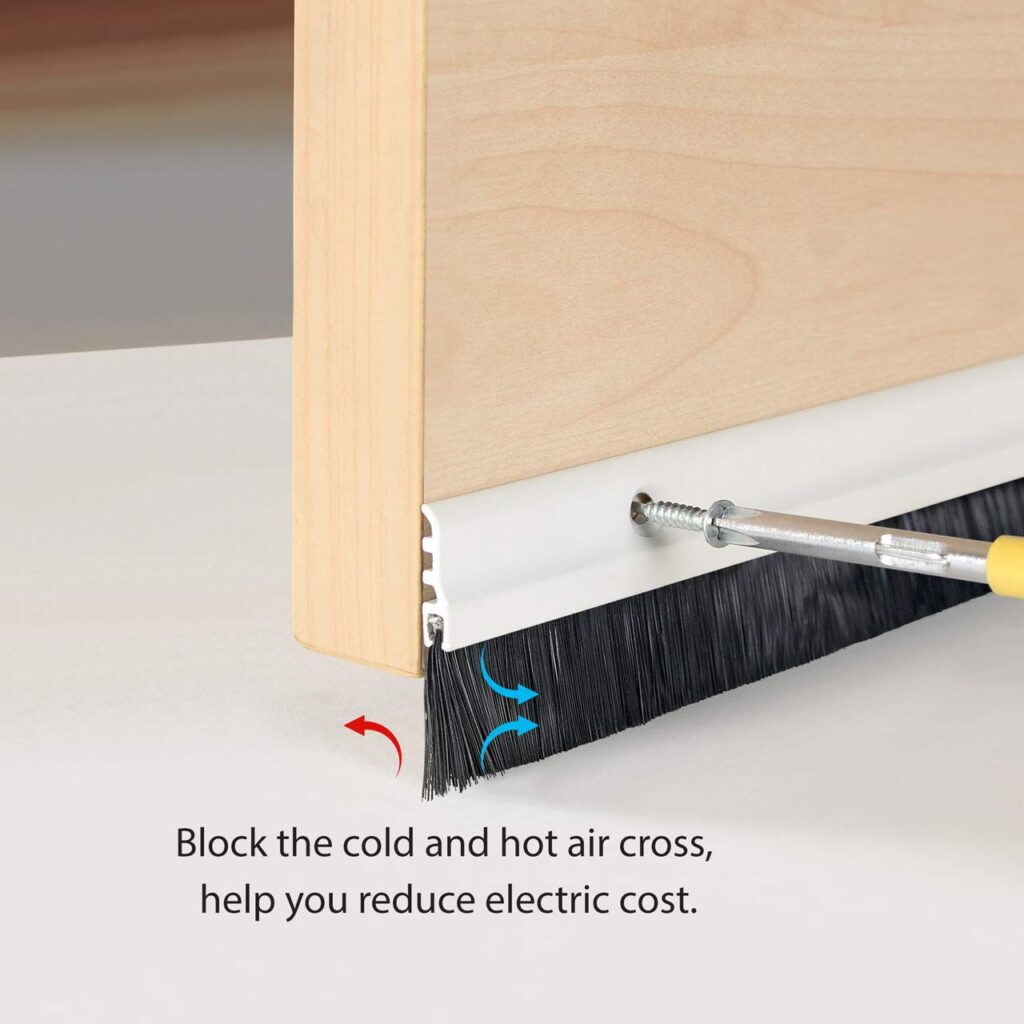

The second type of door seal is a mix of vinyl and foam. It is, essentially, a wide vinyl strip with holes on both sides where foam cylinders are inserted.
You slide them under your door with one cylinder on each side.
This way the two cylinders provide a double barrier against outside air and insects.


Both these types of door seals need to be measured and cut according to your door’s width. The metal ones before installation and the rubber ones after. The metal ones need a special cutter while the rubber ones can be snipped with a pair of scissors.
It is also important to seal all the doors in your room. This includes indoor doors too i.e., doors that lead further into the home in addition to those that lead outside. If the doors are sealed properly, then you’ll find your air purifier to be super-effective, provided it is suitable for the room size.
You’ll be able to keep it on round the clock on auto mode and most of the time it will be quiet. It will only ramp up fan speed when you open doors and will pipe down as soon as the fresh air has been purified.
Of course, at night, we recommend using the night or sleep mode. This mode is typically designed to minimize sound and light coming from the air purifier. For instance, Philips’s air purifiers cut the light out and run the device at turbot for 15 minutes before lowering it down.
Another important thing to remember is pre-filter cleaning. While most air purifiers have an alert for pre-filter cleaning, our recommendation is to do this once a week or ten days. The reason for this is that cleaning your pre-filter will make it more effective. This, in turn, will protect your HEPA filter and prolong its life.
How To Choose from The Best Home Air Purifiers in India Under ₹20,000?
When you spend thousands of rupees on a product, you expect two things out of it. First, you want it to last you a long time. Then, you want it to give you that premium feel. If the device fails to do either of these things, then it is a massive failure.
So, this is the principle on which we’ve selected the top 10 air purifiers in India. This doesn’t mean that all of them are the same, however. Some meet the expectations better than others.
Of course, you’ll need to evaluate these products based on your preferences too because everyone doesn’t have the same expectations. Some have higher standards while others are more lenient.
What we can do here, though, is educate you on what aspects you should be analyzing. Consider.
CADR & ACH


While most people choose air purifiers based on the Brand Recommended Room Size, a more scientifically sound method would be to base the decision on the device’s CADR or ACH value.
CADR stands for Clean Air Delivery Rate. It is usually measured in terms of cubic meters per hour and depicts the volume of air that the device can deliver every hour.
ACH stands for Air Changes per Hour and denotes how many times the air purifier will completely process the air in a given room in 60 minutes. If you combine the CADR value of a device with your room size, you should be able to come up with the ACH of the device, specifically for your room.
This is the important bit. If you know the length, breadth, and height of your room, you should be able to figure out how effective the device is going to be for you. Here’s how you can go about doing this.
- Figure out the length, breadth, and height of your room and multiply the values.
- Remember the CADR value is in m3/hour so you cannot calculate your room’s volume in cubic feet.
- You either figure out its dimensions in meters or convert cubic feet to cubic meters.
- Divide the given CADR with the volume you’ve just calculated. This will give you the ACH value of your device for your room.
- If you want to take it one step further, divide 60 with your room’s ACH value. This will give you the amount of time your device will take to purify your room’s air one time.
This calculation isn’t flawless, however. The problem is that the numbers will only work if your room is air-tight. It isn’t, though, is it? So, you need to compensate for all the leakages.
To do this, we recommend either halving the ACH value or doubling the amount of time the device will take to purify your room one time.
Brand Recommended Room Size
How can we talk about evaluating the best air purifiers in India under ₹20,000 without focusing on Brand Recommended Room Size?
This is the value that most air purifier manufacturers give to their potential customers.
The idea is to make it easier for them to decide.
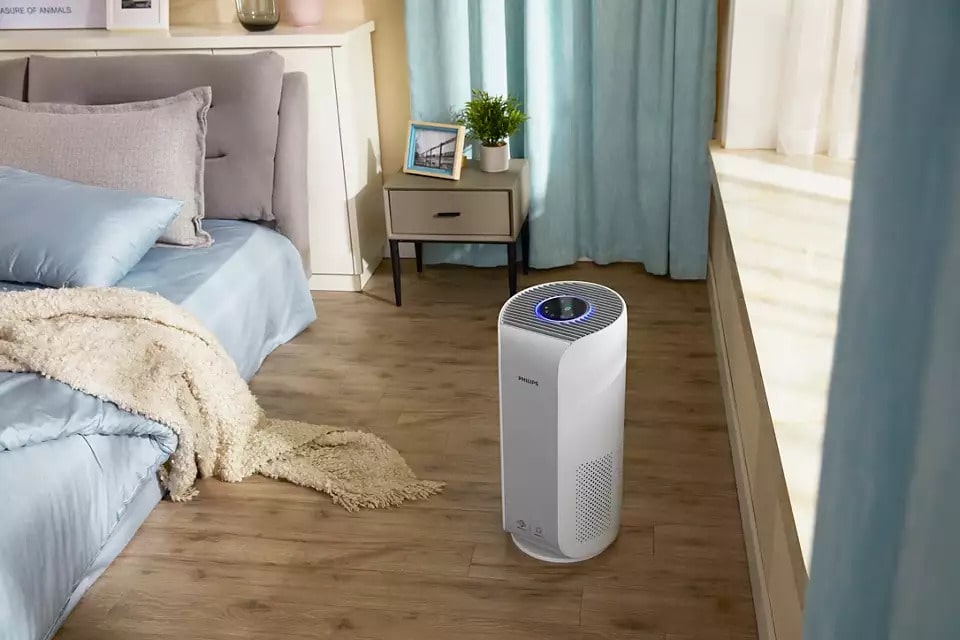

The only problem is that the manufacturers’ calculations are based on ideal conditions i.e., no leakage and maximum mode.
This is why sometimes people buy air purifiers only to realize that it isn’t working as well as the company claimed it would. The reason is the difference between Brand Recommended Room Sizes in ideal conditions and real-world conditions.
So, what can you do? First, we recommend using the CADR to make your calculations. However, if this isn’t something that you want to spend time and effort on, then reduce 100 sq. ft. from the manufacturer-provided Brand Recommended Room Size and then make your choice.
While 100 square feet is a bit too much to account for leakages, it is better to have an air purifier that is slightly larger than what you need than to have one that is perpetually struggling.
Remember, the HEPA filters of smaller air purifiers will also get dirty faster and need replacing quicker, resulting in higher recurring costs.
HEPA Filter Grade
The job of the HEPA filter in your air purifier is to remove small particles from the air.
When it comes to air purifiers in India, the most advanced ones have H14-grade HEPA filters. These filters can remove up to 99.995% of pollutants as small as 0.3 microns.
The most commonly used grade of HEPA filter is H13 and it can remove up to 99.95% of pollutants measuring 0.3 microns.
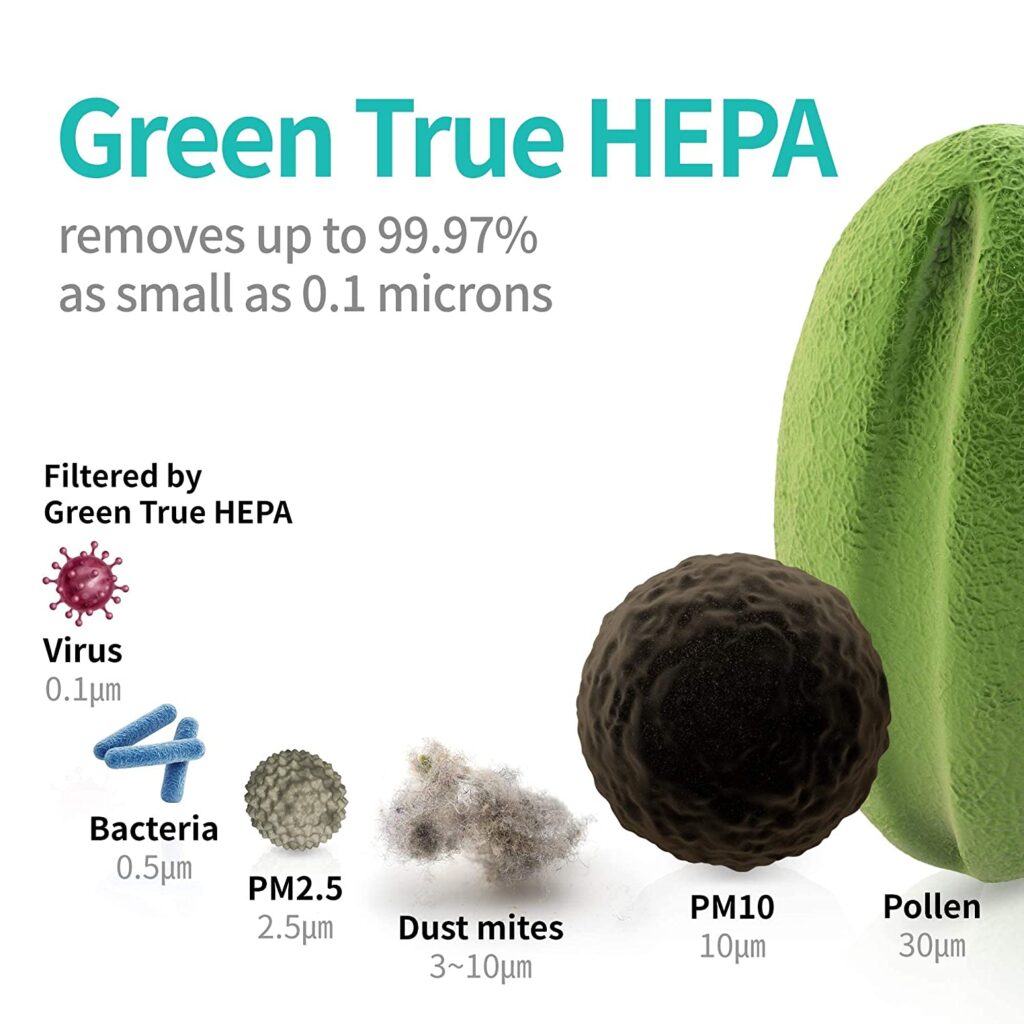

However, some older air purifier models may have even lower grade HEPA filters such as H12 (99.5%) and H11 (95%).
The higher-grade HEPA filters are essentially denser which means that they don’t allow air to move through as easily as lower-grade HEPA filters do. Therefore, air purifiers with higher grade HEPA filters tend to have lower CADR values than those with a lower grade HEPA filter.
However, in practice, the different grades of HEPA filters don’t make that much of a difference.
Higher grade HEPA filters will allow less air to pass through but will pick out more pollutants than lower grade HEPA filters. In contrast, lower grade filters will allow more air to pass through which means that they’ll be able to process all the air in the room much faster.
Effectively, it will all boil down to very little difference. At the same time, if you’re going to be buying a new expensive device, it is much better to go with the latest technology even though the improvement it provides is minuscule.
Replacement Filter Availability
This is an extremely important aspect of air purifiers that most people fail to take into account when buying their devices. They simply don’t look that far ahead.
This aspect is so crucial because it determines the longevity of your device. The logic is simple.
If you can’t find replacement filters then how are you going to use your device in the future?
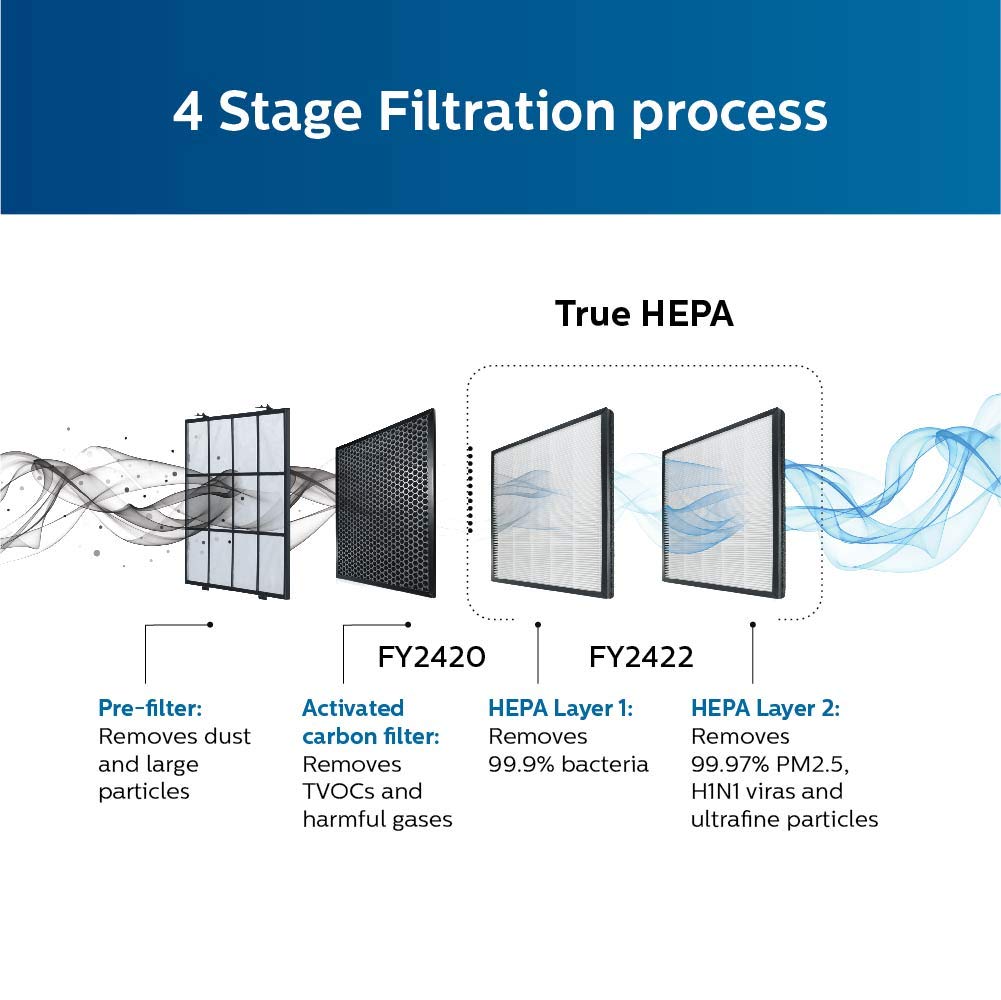

Moreover, if you can’t find replacement filters easily then you’ll end up paying far more for the ones that are available than is justifiable.
Believe it or not, some people have had to buy new air purifiers simply because they couldn’t find replacement filters for their existing air purifiers.
For your information, replacement filters are easier to find for brands that are more established than those that have only entered the air purifier market recently.
The same rationale applies to the post-sales support for an air purifier. If the brand has been around for some time, then it will have the support infrastructure needed to provide the right kind of service.
Ionization
Air ionizing air purifiers usually work by releasing negative ions into the surrounding air.
These negative ions then attach themselves to the impurities and pollutants in the air.
This gives them a negative charge as well as weighs them down.
Effectively, the pollutants either stick to positively charged surfaces around them or settle to the ground.
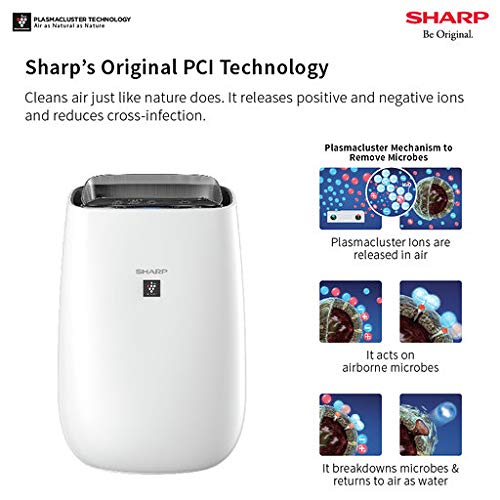

Ionization technology has been around for a very long time. The reason why it isn’t more commonplace in the world is that it has one crucial flaw. This is the fact that most ionizers use a process called corona discharge to produce negative ions.
Corona discharge has a byproduct – ozone. Ozone, unfortunately, is a respiratory irritant that is particularly troublesome for people with asthma.
In the atmosphere, it prevents harmful ultraviolet rays from reaching the surface of our plant but at the ground level ozone creates multiple health problems. This is why WHO cites it as one of the six major air pollutants.
In effect, your ionizing device purifies the air of one pollutant while adding another pollutant to it.
Ultraviolet Sterilization
Ultraviolet sterilization isn’t very common in air purifiers but some do possess this feature.
Ultraviolet sterilization is useful because ultraviolet rays are known to kill off microorganisms such as bacterial and viruses.
It is surprising that not many devices have this feature because it only requires an ultraviolet bulb to be installed in the space through which the air has to pass.


However, one of the reasons could be that having this feature would add another consumable to the mix – the ultraviolet bulb.
Moreover, while scientifically ultraviolet rays are very effective against microorganisms, their efficacy in air purifiers hasn’t been properly tested or proven.
Features & Functions


Looking through the features and functions of an air purifier will always be more about convenience than effectiveness.
The majority of features such as modes, fan speeds, and alerts are there to make it easier for you to use the device. They have no bearing on how effective the device is in the first place.
However, this doesn’t mean you take it lightly. Added features can make a huge impact on how much you end up using the device.
For instance, if the sleep or night mode on the air purifier isn’t effective and the device makes a lot of noise when you’re trying to sleep, then you’re not really going to turn it on the next time.
Similarly, if your device doesn’t turn on automatically after power cuts and you get them often then sooner or later, you’ll just leave it off.
On the other hand, if your device has the WIFI feature along with Voice Control compatibility, then it will make a huge difference to the quality of your life. You’ll not only be able to control it from anywhere in your home but also anywhere in the world.
Other features such as child lock and timer can have the same kind of impact too.
Which is the Best Air Purifier in India Under ₹20,000: At a Glance
Product Name | CADR | Brand Recommended Room Size | HEPA Filter Grade | Price |
240 cu m/hr | 290 sq. ft. | H14 | ||
303 cu m/hr | 355 sq. ft. | H14 | ||
117 cu m/hr | 375 sq. ft. | H14 | ||
333 cu m/hr | 409 sq. ft. | H14 | ||
306 cu m/hr | 430 sq. ft. | H14 | ||
300 cu m/hr | 450 sq. ft. | H11 | ||
380 cu m/hr | 484.3 sq. ft. | H13 | ||
388 cu m/hr | 495 sq. ft. | H13 | ||
350 cu m/hr | 550 sq. ft. | NA | ||
915 cu m/hr | 800 sq. ft. | H14 |
Which Air Purifier is Best in India Under ₹20,000 (Bedroom / Small Rooms): Detailed Reviews
#1: SHARP FP-J40M-W Air Purifier
Editor’s Rating: 8.0/10
While not the cheapest air purifier from this company, this device is the cheapest Sharp air purifier in this guide.
Sharp’s air purifiers stand out of the crowd because of their unique ionization technology and this is true for the FP-J40M-W too.
The company incorporates Plasmacluster technology in all its air purifiers.


The Plasmacluster technology is different from other ionization technologies seen in the industry because it doesn’t produce ozone as a byproduct.
Sharp’s Plasmacluster technology manages to use ionization without creating ozone because it generates both negative and positive ions. As a result, instead of producing ozone, it produces water molecules.
Their devices also have great passive purifications systems based on combi-filters that combine a pre-filter, an activated carbon filter, and a HEPA filter. The HEPA filter component of their combi-filters is H14 grade too, making them the most advanced in the industry.
The combi-filter configuration also ensures a longer life span. Sharp’s filters can last for up to two years. The direct result of their extended life is that these filters are more expensive than the replacement filters of other competing air purifiers.
Availability isn’t an issue either as the company stocks them at most of their service centers. At the same time, aftermarket replacement filters will be harder to find for Sharp’s air purifiers.
In terms of CADR and room size recommendations. This device has a CADR 240 m3 per hour which should be good enough for a room with an area of 200 sq. ft.
This air purifier is loaded with all the modern features and functions too. For instance, like all Sharp devices, this one also boasts of the Japanese design that ensures 20° airflow. This means that this device throws air at the ceiling and the floor at the same time.
There are multiple operational modes too such as Haze, Auto, Max, Med, and Sleep. The Haze mode uses both passive and active purification technologies and is intended for days with, especially high pollution levels.
The device has sensors for a wide variety of things including dust, odor, and even light. The dust and odor sensor results are displayed through a color-based AQI indicator while the light sensor allows the device to turn off the control panel lights when the room becomes dark. Of course, there’s the filter change indicator too.
Unlike most Sharp devices, this one is on the affordable side of things. Like most air purifiers in the market, Sharp backs its air purifier with a 1-year warranty.
Who’s it for: If you want your small room air purifier to have the ionizing capability without its downsides, get this Sharp air purifier.
Tech Specs | Pros | Cons |
|
|
|
#2: Coway AirMega 150 (AP-1019C) Professional Air Purifier
Editor’s Rating: 8.5/10
Coway may be a South Korean brand but this product is still counted among the top air purifiers in India. They claim to have the “World’s Largest R&D Center” with close to 250 experts.
They back the claim up with award-winning air purifiers too. Take the AirMega 150 for example.
This device has won the Good Design & Spark Design Award from the iF RED Dot.


While the old-school rectangular grill-type design of this device must have played its part, we feel that it has won awards because of its unique HEPA filter.
The device uses a specialized antivirus HEPA filter. The HEPA filter is H14 grade but it is green in color because it incorporates parts of sumac trees and Japanese ginkgo leaves.
The company says that the incorporation of these natural substances gives the HEPA filter the ability to destroy protein markers on the surface of viruses. This, in turn, renders the viruses inert.
Other than the HEPA filter, the device also features a pre-filter and a patented urethane carbon filter. The unique nature of the carbon filter and the HEPA filter makes this air purifier very effective which is why it has the ECARF certification to be allergy-friendly.
The HEPA filter, along with the carbon filter, has a life of 8500 hours which amounts to about 10 days short of a whole year. Depending on how much you use your device and how bad the pollution levels are where you live, the filters can last more than one year too.
Another unique design feature of this air purifier from Coway is how the pre-filter is fitted into the device. The cover of the purifier has a cartridge design i.e., a channel where the filters are slid in.
The benefit of this is that you don’t have to extract the dirty pre-filter in your room. You can simply take the cover off and take it to the cleaning area before sliding the filters out.
Coway’s air purifier also boasts of a very good CADR value for a device that is intended for bedrooms and small rooms. Its CADR value exceeds 300 m3 per hour which makes it suitable for a room measuring around 250 sq. ft. in real-world scenarios.
In terms of modes, this device has Auto and Night along with two fan speeds. Other devices tend to have more modes and fan speeds to choose from. The device also boasts of a color-based AQI indicator and a filter replacement indicator. It lacks a child lock too.
Another flaw is that this device has a very short power cord. This can be an annoyance especially if you don’t have the plug point at the right spot or if you want to place the purifier in the middle of the room.
Considering all the design innovations, we found it very surprising that this device is so cheaply priced. It barely made it into our guide and came very close to qualifying for our other guide on the best air purifiers in India under ₹10,000.
Even more amazing is that Coway provides a 2-year general warranty and a 5-year motor warranty. This is better than most other air purifiers in the same price bracket available in the market.
Who’s it for: If you want one of the best antiviral air purifiers and don’t much care for a real-time AQI indicator, get this air purifier from Coway.
Tech Specs | Pros | Cons |
|
|
|
#3: TruSens Z-2000 Air Purifier
Editor’s Rating: 7.5/10
The Z-2000 air purifier is another award-winning device that qualifies for our guide.
It has won the Red Dot Award in 2019 for Product Design. The manufacturing company, TruSens, is based in the US.
The most exceptional quality of this device is the remote SensorPod.


This is essentially a sensor that you can place anywhere in the room.
The sensor will send back information to the device, allowing it to monitor the AQI levels more comprehensively.
Another superb quality of this device is that you can get specialized HEPA filters from the company. Apart from the standard HEPA filter, there are three other options to choose from.
These are Specialty Allergy & Flu, Specialty Odor & VOCs, and Specialty Pet. All the HEPA filters are H14 grade and last for anything between 12 to 15 months. The HEPA filter is easily available but it is a bit on the expensive side.
The HEPA filter forms one level of a 4-level purification system. The other three levels are the pre-filter, the carbon filter, and ultraviolet sterilization. Ultraviolet sterilization is useful because it kills viruses and other microorganisms.
One more design-focused quality of this device is its PureDirect 360-degree DuPont Filtration technology. This technology splits the purified airflow into two separate streams. The company says that this makes this device around 24% more efficient than other similar devices.
In terms of features, this air purifier comes with three fan speeds, a timer, and filter replacement indicators. However, there is no child lock feature. It monitors the AQI and shows the findings in terms of both color and numeric displays.
Unfortunately, this air purifier is priced expensively. More concerning is its warranty. It comes with a 2-year warranty but the warranty is only carry-in. This means that the company doesn’t have any infrastructure in the country and relies on a few service centers in major cities to cater to its customers.
This is a huge flaw in our opinion even though well-made air purifiers don’t break down often. Even the service centers are not run directly by TruSens and are instead outsourced to a local manufacturer.
Another major flaw of this device, especially in India, is that it doesn’t turn on automatically after power cuts. Since most cities in India see power cuts regularly, this is a massive oversight on the part of the designers too.
This device has a very low CADR value too. With a CADR of 117 m3 per hour, we cannot understand how the company recommends this device for a 375 sq. ft room. At best, and that is only because of its cylindrical design, we think this device would be suitable for rooms measuring between 150 and 200 sq. ft.
Who’s it for: If you’re willing to risk buying a device without sufficient post-sales support and want some unique features such as the sensor pod, get this device from TruSens.
Tech Specs | Pros | Cons |
|
|
|
Which is Best Air Purifier Under ₹20,000 (Dining Room / Medium Rooms): Detailed Reviews
#1: Philips AC2887 Air Purifier
Editor’s Rating: 9.0/10
Regardless of which price bracket you look at, if Philips has a contender in play, then its air purifier will take the cake.
In the medium-sized room section of the price segment we’re focusing on, the AC2887 has been India’s best air purifier for an amazingly long period.
The CADR value of this device is just a little higher than what Coway offers.


Philips says that its CADR of 333 m3 per hour makes it suitable for a room measuring upwards of 400 sq. ft.
We think it will probably be better suitable for a room measuring somewhere between 250 sq. ft. and 300 sq. ft.
This makes sense too because the company says that this device will take about 10 minutes to completely purify the air of a room with an area of 216 sq. ft. That, remember, is only in ideal conditions.
All Philips air purifiers are based on passive purification i.e., filters. This one boasts a pre-filter, a carbon filter, and a HEPA filter of H14 grade. The replacement filters are easily and affordably available for all Philips air purifiers. You’ll even have access to aftermarket suppliers online for replacement filters if you want to save money.
It also has a very accurate AQI indicator that uses both numbers and colors to convey the state of the room’s air. The indicator is based on the company’s Vitashield Intelligent technology and ties in directly to the Auto mode in the device.
Other than this, there are three pre-settings in this device that vary CADRs to cope with different types of pollutants. These pre-settings are General, Allergen, and Bacteria & Virus mode.
The device also has a smart light control that adjusts display lighting according to the light levels in the room. There’s no child lock, though.
Philips’s devices offer incredible reliability and re-usability because of the availability of replacement filters. Further, the company has a very widespread and strategically located service infrastructure that means that you can get post-sales support easily.
This is the main reason why their products are a little on the expensive side. They do offer 2-year warranties on them all and in the long term, everything combines to be durable, trustworthy, and effective.
Who’s it for: If you want the most reliable air purifier in this price bracket for a mid-sized room, get this one from Philips.
Tech Specs | Pros | Cons |
|
|
|
#2: Sharp FP-GM50E-B Air Purifier with Mosquito Catcher
Editor’s Rating: 7.5/10
Sharp tried something different with its FP-GM50E-B air purifier.
It added a mosquito catcher function and called it the “world’s first air purifier with 100% chemical-free mosquito trapping function”.
Unfortunately, while the gimmick is interesting, it isn’t groundbreaking enough to make this device the best in the segment.


The mosquito catcher function of this device is based on multiple factors.
The first is the black body of the device which is supposed to be more attractive to mosquitos and pull them towards the unit.
The next is the ultraviolet light function that is again supposed to attract mosquitos into the unit.
The third is a sticky or gluey sheet inside the device that is supposed to trap the mosquito.
The mosquito catching function could’ve made a huge difference in how popular this device is in India if it had worked flawlessly. In other words, if you have mosquitos in your room, it will pull some of them in while the others will still be free.
Unfortunately, it feels like a cool but gimmicky add-on rather than a gamechanger. The air purifier, otherwise, is like all Sharp devices i.e., super effective. It uses both passive and active purification technologies.
Passively, this device uses a combi-filter that incorporates a pre-filter, an activated carbon filter, and an H14 grade HEPA filter. The entire combi-filter is supposed to last around two years depending on how much you use the device or how bad the pollution is in your location.
The replacement filter will be expensive but since it lasts so long, the cost evens out. The replacement filters are easily available from the company.
You won’t know when to change the filter because there’s no filter change alert. Instead, you’ll have to keep track of time or wait for the technician to tell you during a service.
When it comes to active purification, this device uses Sharp’s patented ionization technology. The uniqueness of the technology prevents ozone production.
Instead of only negative ions, the device releases both negative and positive ions. As a result, the device produces water molecules as opposed to ozone molecules. The company calls the technology Plasmacluster.
The ionization technology comes into play in Haze mode. This mode is intended for high pollution days. Other available modes are High, Medium, and Low.
The device also has the usual dust and odor sensor that is connected to its air quality indicator. The air quality indicator, unfortunately, is only color-coded and doesn’t show actual numerical AQI values.
The CADR of this device is just over 300 m3 per hour. This, according to us, is best suited to a room measuring about 250 sq. ft. However, the company gives 430 sq. ft. as the Brand Recommended Room Size for this device.
We think this is because of two things – ionization and the 20° airflow technologies. The ionization technology augments the purification abilities of this device just like the improved airflow.
However, we feel that even with these two technologies 430 sq. ft. is a bit too optimistic. At most, we think this device would be suitable for 300 to 350 sq. ft. rooms provided you take care of most of the leakages.
The addition of the patented ionization technology and the mosquito catcher means that this is an expensive device. It comes with only a 1-year warranty as against 2-year warranties offered by other brands.
Who’s it for: If you have a major mosquito problem in your home and want an air purifier that can take care of that problem too, get this one from Sharp.
Tech Specs | Pros | Cons |
|
|
|
#3: Honeywell Air Touch HAC35M1101W Room Air Purifier
Editor’s Rating: 7.0/10
Honeywell is a direct competitor of Philips.
This is the main reason why the air purifiers from the two brands are often alike.
The Air Touch HAC35M1101W air purifier from Honeywell, for example, is very similar to the AC2887 air purifier we’ve already reviewed from Philips.
It has a CADR value of 300 m3 per hour which makes it suitable for a room measuring somewhere between 250 sq. ft. and 300 sq. ft.


The company says it will be good for a 450 sq. ft. room but we don’t think that is the case unless you completely seal leakages. The only reason we think it can be appropriate for a 300 sq. ft. room is its 3D airflow design.
This device uses a 3-stage filtration system that includes a pre-filter, a patented HiSiv filter, and a HEPA filter. The HiSiv filter is unique to Honeywell and features a honeycomb design which makes it particularly effective against odors, gases, and VOCs.
One of the greatest flaws of this device is that its HEPA filter is only H11 grade. This is significantly low especially since the industry has now started using H14 grade HEPA filters.
The company also specifies that its filters have a life of approximately 3000 hours. This amounts to over four months of non-stop use. If you don’t use it all the time, your filters should last anywhere between 6 and 12 months depending on how bad the pollution levels are.
This is much lower than what other brands are offering. What makes it worse is that Honeywell’s replacement filters are expensive too. The device will tell you when the filters need to be replaced.
In terms of using the device, the features are helpful. The device has Auto and Silent modes. You use one for hands-off usage and the other at night. The Auto mode depends on the pollution sensor in the air purifier which displays its findings through a color-based indicator.
There’s a child lock but the device doesn’t have the timer function. Another flaw of this device is that it doesn’t turn on automatically after a power cut. This can be quite annoying as you’ll have to get up and turn it on every time you have a cut.
One thing that sets this device apart from its competitors is that it is available in two colors. You can get it in Champagne Gold or plain White.
This air purifier is neither cheap nor expensive. It is affordably priced and the company supports it with an 18-month warranty.
Who’s it for: If you want an alternative for Philips’s air purifiers with some color options, go for this one from Honeywell.
Tech Specs | Pros | Cons |
|
|
|
Top 4 Air Purifiers in India Under ₹20,000 (Large Rooms): Detailed Reviews
#1: Philips AC2958/63 Air Purifier
Editor’s Rating: 8.5/10
Philips has been making the top air purifiers in India for a very long time now.
However, when Xiaomi released their Mi Air Purifier 3, it became a serious challenger.


The reason wasn’t that the Mi air purifier was better than the Philips air purifier in terms of core functions (far from it in fact).
The reason was that the Mi device came with WIFI, app, and voice compatibility. This was a function that Philips air purifiers didn’t possess.
However, Philips is trying to change all that with the AC2958/63 air purifier. Like the more recent models from other brands, this one not only supports WIFI connectivity and app control but also voice compatibility through Google Voice Assistant and Amazon Alexa.
This device also has a greater CADR than other models from the company which means that it is suitable for larger rooms. Its CADR is 380 which makes it fit for rooms with a floor area of about 300 sq. ft to 350 sq. ft. However, that estimate is made without incorporating the cylindrical design of this device.
Most air purifiers from Philips are cuboidal and flat with intake vents towards the front and sides and expulsion vents at the top. This device is different. Its cylindrical design means that it takes in air from all around instead of just two directions.
The air is still expelled at the top but the fact that it is cylindrical means that you’ll be putting it away from walls. This will result in better circulation. This would be significant enough for it to be effective in another 50 sq. ft. making it suitable for rooms measuring somewhere between 350 sq. ft. and 400 sq. ft.
The filter configuration inside this device is also different. It has a combi-filter system that incorporates three layers. These are the pre-filter, the activated charcoal filter, and the NanoProtect HEPA filter. Fancy names aside, the HEPA filter is H13 grade.
Like all air purifiers from Philips, the filter life of this one is also impressive and slightly better than its competitors. The company says that its filter can last up to 3 years. Replacement filters, of course, are easily available too.
All the convenience-focused features that you usually find in Philips air purifiers are present in this model too. This includes the intelligent Auto mode that changes fan speeds according to what the AQI indicator tells it and the light sensor that brings on the Sleep mode when the light levels go down in the room.
The AQI indicator is also very useful since it shows the monitor’s results in color and numeric values. Additionally, there are the Gentle and Turbo modes along with three fan speeds.
Being one of the most advanced products from Philips suitable for larger rooms, this air purifier is a bit on the expensive side. However, since Philips air purifiers are quite reliable and long-lasting, we’re not too worried about the extra cost. You shouldn’t be either especially since Philips backs its product with a 2-year warranty.
Who’s it for: In terms of WIFI enabled air purifiers, the best has to be this one from Philips.
Tech Specs | Pros | Cons |
|
|
|
#2: Havells Freshia AP-46 85-Watt Air Purifier with Remote
Editor’s Rating: 8.0/10
Havells is coming into the air purifier market in a big way.
The only problem is that they’re only on their way and haven’t fully arrived yet.
We say this because even though their air purifiers are superb, the post-sales support they provide on their products is poor.
This is most evident by the fact that replacement filters for their devices aren’t easily available.


Countless buyers have complained that they’ve been unable to get replacement filters even after pursuing company professionals up the hierarchical chain over many weeks.
If Havells were to fix replacement filter availability, they would end up taking a huge chunk of the air purifiers market in the country.
As to why we think this device is so good, the answer is the fact that it is loaded with features at a significantly lower price than its competitors. There are even features that aren’t available with competitors such as the remote.
The CADR of this device is also pretty high at 388 m3 per hour. This means that it can handle a room measuring about 300 sq. ft. to 350 sq. ft. The company claims 495 sq. ft. but that claim wouldn’t hold water in real-world conditions.
In terms of its core purpose, this device boasts a 7-stage filtration system. These stages are pre-filter, cold catalyst, activated carbon, antibacterial, HEPA (H13 grade only), UV, and anion.
Pre-filters are for PM10 and bigger dust particles, cold catalyst filters are for dealing with VOCs and harmful gases, activated carbon filters take care of odors, antibacterial filters kill microbes, and HEPA filters are for PM2.5 pollution.
The ultraviolet sterilization supports the antibacterial filter’s work by killing viruses and bacteria while the anion function deals with PM10, PM2.5, and microorganisms.
Havells has incorporated multiple modes into the device too such as Aroma, UV, Auto, and Sleep. The Auto mode ties in with the real-time AQI indicator, increasing and reducing fan speeds according to the pollution in the room. The AQI indicator shows the state of the room numerically and through colors.
You’ll also be able to choose fan speeds manually, lock your device against children, and the schedule starts. Moreover, for what it’s worth, the device will tell you when the filters need to be replaced.
The company also offers a 2-year warranty on the device.
Who’s it for: If you’re looking for an air purifier with all the technologies known to man and are willing to risk not finding filters in the future, get this one from Havells.
Tech Specs | Pros | Cons |
|
|
|
#3: Lasko A554IN Electrostatic Air Purifier
Editor’s Rating: 7.5/10
The A554IN from Lasko is unique in the Indian market.
It is different from all other air purifiers because it uses an electrostatic field to purify the air in your room.
In simple terms, this device uses a charged field between metallic plates to trap pollutants in the air.
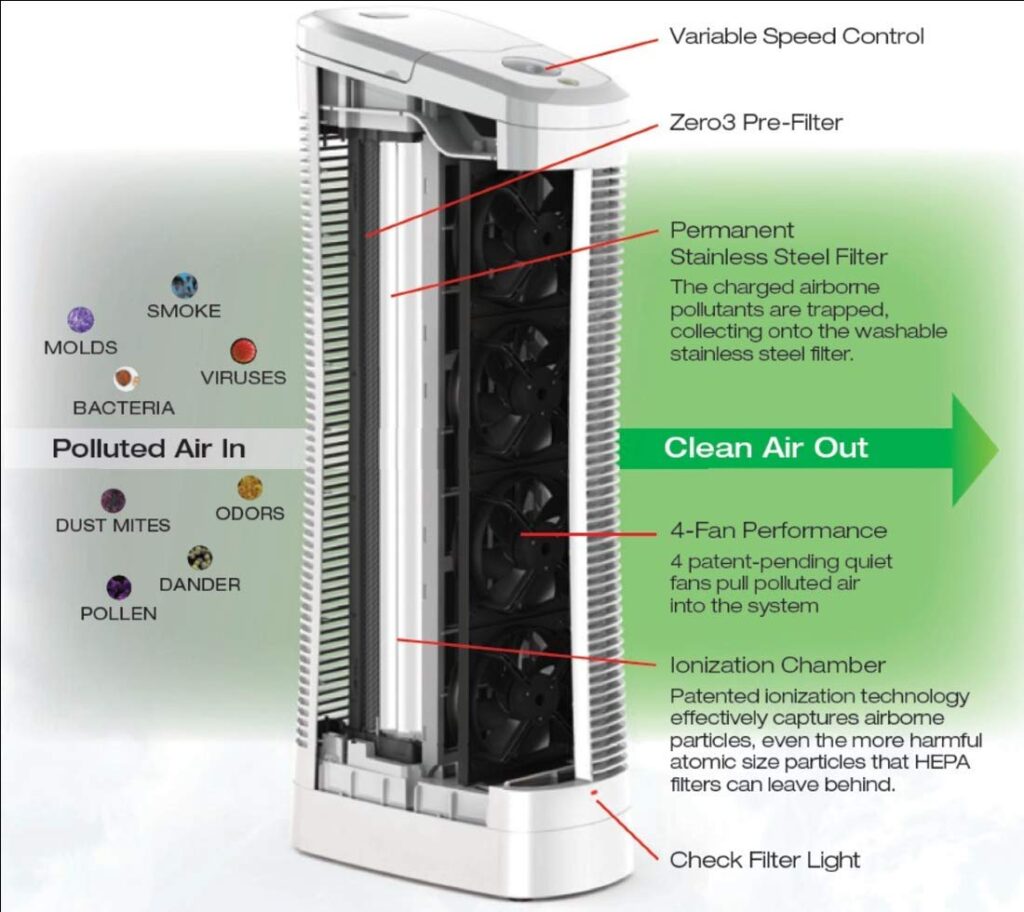

The plates are stainless steel and create the electrostatic field because of an ionizer wire.
Incidentally, in case you didn’t know, an electrostatic field is just the space between two differently charged surfaces. Because of the difference in charges of the two surfaces, electrons travel between the plates.
The fan in this device sucks in the air in your room. This sucked-in air goes through this electrostatic field, where electrons stick to the pollutants, charge them, and push them towards the oppositely charged plates.
Uniqueness aside, you’re probably wondering why you should consider buying this device over other more conventional air purifiers in the market. You should if you don’t want the hassle of changing filters every few months.
You see, after the metal plates are saturated with pollutants, an alert on the display panel lights up. When this happens, you’re supposed to remove the filters and wash them in the bathroom. Once dry, you simply put them back into the device. The company says that the filters will not need to be replaced for 10 years!
The most important downside of this device is the same as any ionizing air purifier i.e., it produces ozone. While the device boasts an ozone emission removal filter, we’re not sure how effective it is. Whether you buy this device or not will depend on your beliefs and preferences about ozone production by ionizers.
In terms of capacity, the company says that this device’s CADR of 350 m3 per hour is good enough for a room measuring 550 sq. ft. Realistically, however, it is a better fit for a room measuring around 300 sq. ft. to 350 sq. ft.
The CADR value of this purifier comes through four different fans. You’ll even get 10 different fan speeds to choose from. Having this ability is important too because, at higher speeds, this device can get quite noisy.
While not needing to change filters is a huge advantage to have, this device has considerable flaws in addition to ozone production too.
For instance, it doesn’t come with any AQI indicator which can make it difficult to decide whether it is working properly or not. Further, the post-sales service of this device is suspect.
Lasko is a very old company (100 years) but it primarily operates in the US. They have zero presence in India. To provide their service, they’re relying on local distributors.
These distributors are unable to provide the kind of quality and speed of service that bigger companies in the industry can. Therefore, even the 3-year on-site motor warranty doesn’t mean much in practice.
On the flip side, this is an incredibly cheap device. It is also pretty simple which means that a local electrician should be able to fix it if it does break down.
Another flaw of this air purifier is that it doesn’t start automatically after a power cut. This is typical of devices manufactured mainly for western countries. In India where regular power cuts are the norm, this can be a problem.
Who’s it for: If you’re looking for an air purifier that won’t require you to spend money on replacing filters, again and again, get this one from Lasko.
Tech Specs | Pros | Cons |
|
|
|
#4: Blue Star BS-AP490LAN Air Purifier
Editor’s Rating: 7.5/10
Within this price bracket, this air purifier from Blue Star has the maximum capacity. The BS-AP490LAN air purifier has a massive CADR of 915 m3 per hour.
This is more than double the air purifier with the next highest CADR – Havells with 388 m3 per hour.
The company says that this CADR value means that their device will be able to cope with a room as large as 800 sq. ft.
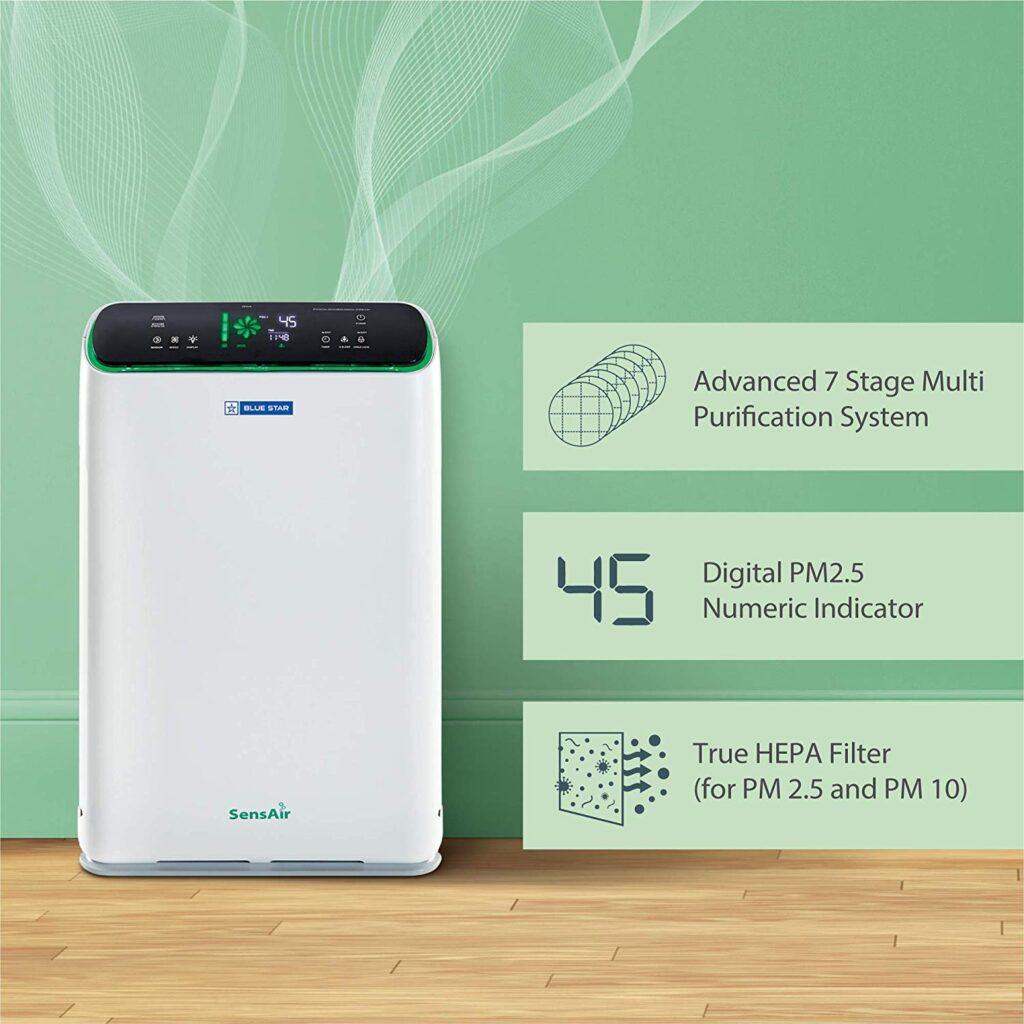

Again, this would be in ideal conditions so we think, in real-world conditions, it is better if you take this coverage area down to somewhere between 650 sq. ft. and 700 sq. ft. That is still double the coverage area of its competitors.
The quality of purification provided by this device is also great since it has a 7-stage purification system. This includes the usual pre-filter, activated carbon filter, and the HEPA filter along with the cold catalyst filter. The HEPA filter in this device is the latest in the market too i.e., H14 grade.
However, this is where we see the first problem. Replacement filters aren’t easily available. The provided filters last for approximately 1 year and the device will tell you when they need replacing but even if you contact the company, you’ll have trouble finding the filters.
Using the device is super-easy. It boasts of an Auto mode based on what the company calls the SensAir Technology. What this means, however, is that the device monitors the pollution in the room and adjusts the fan speed to cope with it.
The device will also share the AQI levels of your room with you through a color-based and numerical indicator in the control panel.
Other than the Auto mode, this device has a Sleep mode too. Further, the device also has microbe sterilization technology which uses ultraviolet rays to kill off microorganisms of all kinds.
You’ll be able to set the timer as well as lock the controls if you have toddlers in the house. There will even be a remote with the device. However, the remote is broken in the package far more often than we like so we suggest checking it as soon as you receive the package.
Unbelievably, this is an extremely cheap device. It is closer to the ₹10,000 mark than the ₹20,000 limit. It also comes with a 2-year warranty but that warranty isn’t the most useful because of poor post-sales service. If you’re in a big city, you’ll be fine but if you’re in a smaller town then you may not get the service you deserve.
Another flaw of this device is that it doesn’t start automatically after a power cut.
Who’s it for: If you have a particularly large room and are working on a tight budget, get this air purifier from Blue Star.
Tech Specs | Pros | Cons |
|
|
|
Contents





